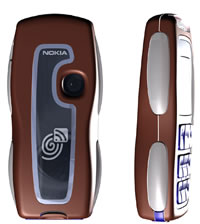According to a story published today on tech Web site The Register, Nokia is in the middle of an 18-24 month transition to offer customised mobile phone designs and software that will make it easier for network operators to differentiate their offerings. In a move that looks like submission for the world’s largest mobile phone manufacturer, almost 90 per cent of the company’s 2005 phone line-up will support software customisation and 25 per cent will have exclusive operator designs.
Nokia has also indicated that handset margins would stay under pressure, forecasting a 17-18 per cent operating margin in two to three years’ time – well down from 25 per cent in its heyday a few years ago and reflecting tougher competition from the likes of Samsung Electronics. Whilst going through a turbulent year, plugging gaping holes in its product portfolio and fighting off competition by cutting prices, Nokia’s turnaround has already helped it to deliver results, driving forth its goal of eventually grabbing 40 per cent market share – up from a current share of around 30 per cent (Source: IDC).
Since April, Nokia has launched a number of new phones, including clamshells, and said half of its handset sales would come from new and foldaway designs by the fourth quarter of next year, up from some 19 per cent expected late this year and virtually zero at the beginning of 2004 when all designs had the shape of a candybar, according to Yahoo! India. Of the 40 new handsets Nokia plans to launch in 2005, more than half will be clamshell, slider or other factors, compared to just three at the start of this year.
We can expect to see more high-end multimedia devices and enterprise solutions, as well as Nokia driving the software standards agenda with platforms such as Series 60 and the new content framework, Preminet. High-end phones will offer full Internet browsers, integrated stereo music players, video playback and recording features, FM radio, and megapixel digital cameras. In 2006, the company will announce its first mobile phone with a built-in television receiver, which is being tested in the UK and Finland now.
 Nokia has lifted the lid on the world’s first NFC (Near Field Communication) equipped mobile phone by adding the special NFC clip-on shell to their 3220, a tri-band camera phone that is available in two versions (Euro/Asia & America). With its build-in NFC shell, the phone is the latest step in the development of innovative products for mobile communications.
Nokia has lifted the lid on the world’s first NFC (Near Field Communication) equipped mobile phone by adding the special NFC clip-on shell to their 3220, a tri-band camera phone that is available in two versions (Euro/Asia & America). With its build-in NFC shell, the phone is the latest step in the development of innovative products for mobile communications.